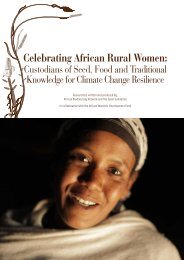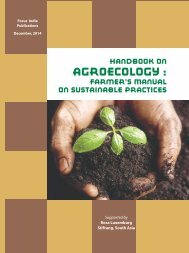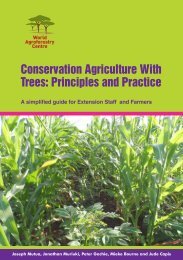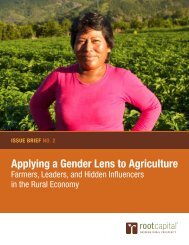1t0SC7l
1t0SC7l
1t0SC7l
Create successful ePaper yourself
Turn your PDF publications into a flip-book with our unique Google optimized e-Paper software.
emain almost constant. When clearing the forest destroys this nutrient equilibrium, the nutrient<br />
cycle is severely interrupted and through crop harvest, leaching and erosion, part of the nutrients<br />
disappears out of the system; and the land becomes unproductive.<br />
Effects of burning. The direct effects of burning vegetative materials are:<br />
- concentration of mineral nutrient ions contained in the vegetative material into ash spread<br />
over the soil surface;<br />
- loss of carbon, nitrogen and volatile sulphur from the burned material to the atmosphere;<br />
- high temperatures of soil surface layer affect the physical and chemical properties of soil<br />
colloids, biological populations, nutrient availability and destroy some weed seeds.<br />
Sanchez (1984) and Andriesse and Schelhaas (1987) reported in tropical Latin America and<br />
tropical Southeast Asia striking changes in soil properties due to burning. According to Andriesse<br />
and Schelhaas (1987), successive burns result in 20-25% decrease in organic carbon, 5-10%<br />
decrease in CEC and less than 10% decrease in total phosphorous. Mainly affected are the<br />
minerals in the top 25-cm of the soil. Fertility improvement from ash as a result of burning was<br />
observed at the same depth with increases in available Sulphur (2-60%), available Phosphorous<br />
(50-300%), Calcium (50-200%), Magnesium (15-45%), and Potassium (6-80%). The increase in<br />
bases led to higher pH. Burning, on one hand, improved the soil fertility, but on the other hand,<br />
left the soil bare leading to intense leaching and erosion of bases during cultivation resulting in<br />
subsequent pH decrease.<br />
45








